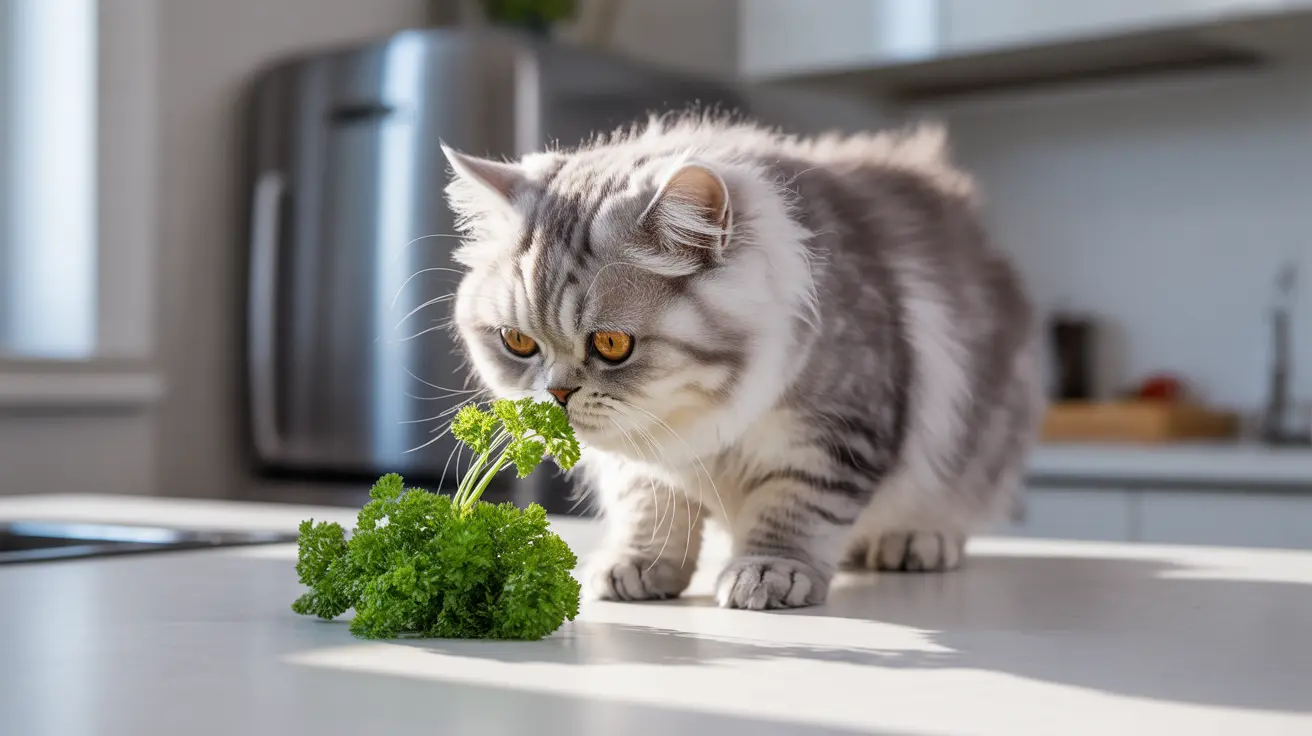As a cat owner, you might wonder about the safety of sharing common kitchen herbs with your feline friend. Parsley, a popular garnish and cooking ingredient, often raises questions about its compatibility with cats. This comprehensive guide will explore everything you need to know about cats and parsley consumption, including safety considerations, potential benefits, and important precautions.
Understanding Parsley Safety for Cats
Cats can safely consume parsley in small amounts, but moderation is crucial. While the herb offers some nutritional benefits, it contains compounds called furanocoumarins that can be toxic in large quantities. Curly-leaf parsley is generally considered the safest variety for cats, while spring parsley should be strictly avoided due to its higher toxicity levels.
Potential Health Benefits of Parsley
When offered in appropriate amounts, parsley can provide several nutritional benefits for cats:
- Vitamin A for vision and skin health
- Vitamin K for blood clotting
- Antioxidants for immune support
- Minerals including potassium and iron
- Natural breath freshening properties
Important Safety Considerations
While parsley can be safe in moderation, there are several important factors to consider:
Proper Serving Size
A few finely chopped leaves occasionally sprinkled on food is sufficient. Never make parsley a daily addition to your cat's diet, as this could lead to toxic buildup.
Risk Factors
Some cats should avoid parsley entirely, including:
- Pregnant or nursing cats
- Cats with kidney problems
- Those with existing medical conditions
- Cats taking certain medications
Signs of Parsley Toxicity
Watch for these symptoms if your cat consumes too much parsley:
- Gastrointestinal upset
- Increased skin sensitivity
- Photosensitization
- Dermatitis
- Vomiting or diarrhea
Safe Ways to Offer Parsley
If you choose to give your cat parsley, follow these guidelines:
- Use only fresh, clean curly-leaf parsley
- Finely chop a small amount
- Sprinkle occasionally on regular food
- Consider making a mild parsley water infusion
- Always introduce new foods gradually
Frequently Asked Questions
Can cats safely eat parsley, and how much is considered a safe amount?
A few finely chopped leaves occasionally (once or twice a week) is considered safe. Never exceed more than a small pinch per serving.
What are the health benefits and risks of giving parsley to my cat?
Benefits include vitamins A and K, antioxidants, and natural breath freshening. Risks include potential photosensitization and digestive issues if consumed in large amounts.
Which types of parsley are safe or toxic for cats to consume?
Curly-leaf parsley is the safest variety. Spring parsley is toxic and should be avoided entirely. Flat-leaf parsley falls in between but should be used with extra caution.
How can I offer parsley to my cat without causing harmful effects?
Finely chop fresh curly-leaf parsley and sprinkle a small amount on their regular food, or prepare a mild parsley water infusion. Always introduce gradually and monitor for adverse reactions.
What symptoms should I watch for if my cat eats too much parsley?
Watch for vomiting, diarrhea, skin sensitivity, excessive drooling, or unusual lethargy. If you notice any of these symptoms, contact your veterinarian immediately.
Remember, while parsley can be safe for cats in moderation, it's always best to consult with your veterinarian before adding any new food to your cat's diet, especially if your pet has existing health conditions or is taking medications.






